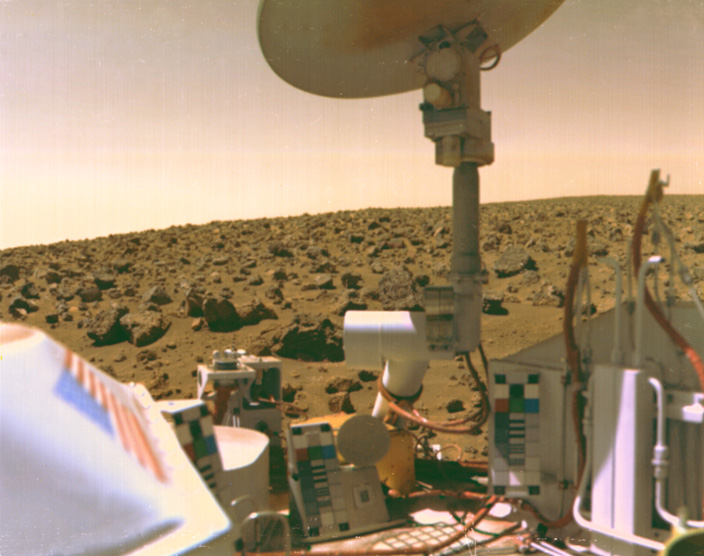Missions
Viking Mars Landers

Color image from Viking 2 lander. One of the lander's two radioisotope generators is protected by the windscreen cover at lower left that bears a U.S. flag.
Viking Mars Landers
Viking 1 Lander
- Launched on August 20, 1975
- First mission to land on Mars
- RTGs operated for over six years, until lander was shut down
Viking 2 Lander
- Launched on September 9, 1975
- RTGs operated for over four years until relay link (Viking orbiter) was lost
Powered by:
two SNAP-19 RTGs each
Goals:
NASA's Viking mission to Mars was composed of two pairs of spacecraft—Viking 1 and Viking 2—each consisting of an orbiter and a lander. The spacecraft were designed to take high-resolution images of the Martian surface, characterize the structure and composition of the atmosphere and surface, and search for evidence of life.
Accomplishments:
Viking 1 was the first successful mission to land on Mars (the Soviet Mars 3 lander survived for a few seconds after landing in 1971, but sent back no science data), operating on Chryse Planitia until November 1982. Viking 2 lander set down on Utopia Planitia and operated until April 1980.
The four Viking spacecraft provided numerous new insights into the nature and history of Mars, producing a vivid overall picture of a cold weathered surface with reddish volcanic soil under a thin, dry carbon dioxide atmosphere, clear evidence for the existence of ancient river beds and vast floods, and no detectable seismic activity.
Although no traces of life were found, Viking found all elements essential to life on Earth—carbon, nitrogen, hydrogen, oxygen and phosphorus—were present on Mars.
